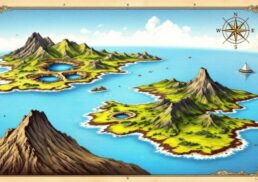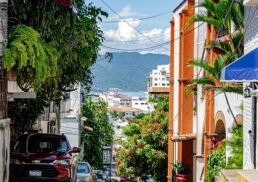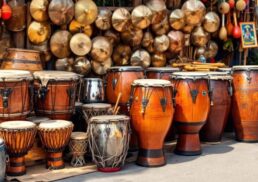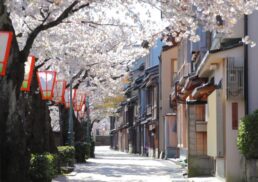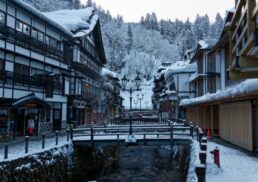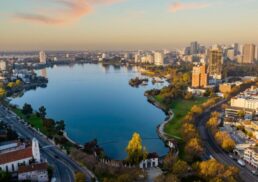What defines the region of Southeast Asia? Enveloping 11 countries, this area is a crucial junction of diverse cultures, strategic geopolitical interests, and rapidly growing economies. From Myanmar’s temples to Singapore’s skyscrapers, Southeast Asia offers a unique blend of tradition and modernity, shaping its pivotal role on the global stage.
Table of Contents
Key Takeaways
Southeast Asia is a geographically diverse region composed of mainland (Indochinese and Malay Peninsulas) and maritime domains (archipelagos and islands), characterized by complex geopolitical relations, particularly in the contested South China Sea where ASEAN nations and China assert overlapping territorial claims.
The region’s cultural landscape is a multifaceted mosaic influenced by an array of ethnicities, religions, and languages, with a rich history of human migration and cultural exchanges that has fostered ethnic diversity, religious harmony, and linguistic richness.
Economically, Southeast Asia has evolved from historic spice trade to contemporary industrialization, with ASEAN playing a significant role in regional cooperation and growth despite facing challenges like global health crises and climate change, and opportunities in post-pandemic recovery and sustainable development.
Understanding the Geopolitical Tapestry of Southeast Asia
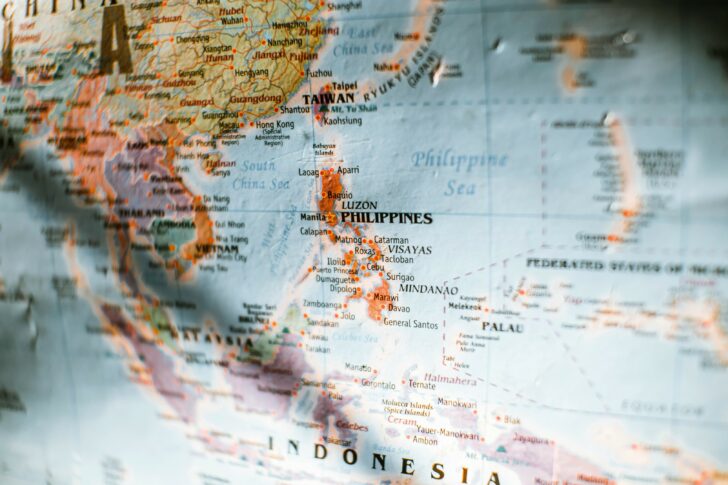
Southeast Asia, a region that encompasses a myriad of landscapes and political boundaries, is a theater of diversity where mainland and maritime narratives intertwine. Bordered by East Asia, South Asia, Oceania, and the vast Pacific Ocean, the region stretches over approximately 4,500,000 square kilometers, representing about 8% of the Eurasian landmass. It is a realm where the geopolitical intricacies of the Indochinese and Malay Peninsulas merge seamlessly with the myriad islands of the maritime domain, each with its own story to tell, including the breathtaking Southeast Asia falls.
Southeast Asia’s richness and complexity present certain challenges. The region, an intricate puzzle of nations with varied interests, is unified by a shared geography. The South China Sea stands as a testament to this, with its contested waters stirring up not just waves but also geopolitical tensions among ASEan countries and China. These contested waters, alongside cultural and economic ties, bind the Southeast Asians together in a complex web of cooperation and competition, setting the stage for a deeper understanding of the region’s intricacies.
The Mainland: Indochinese Peninsula and Malay Peninsula
Mainland Southeast Asia artfully combines the lush landscapes of the Indochinese Peninsula with the historical and cultural richness of the Malay Peninsula. This continental portion of Southeast Asia is home to:
Myanmar
Thailand, including the beautiful region of Southern Thailand
Laos
Cambodia
Vietnam
West Malaysia
Each with its distinct identity yet sharing a common geographical canvas. The Indochinese Peninsula, in particular, is steeped in history and natural beauty, from the tranquil waters of the Mekong to the bustling streets of Hanoi in northern Vietnam, extending further to the rich cultural heritage of southern Vietnam.
The southern portion of the Malay Peninsula, on the other hand, tells a different story. West Malaysia, with its mix of towering skyscrapers and traditional kampongs, embodies the region’s juxtaposition of old and new. Together, these areas form the mainland part of Southeast Asia, a region where political structures have been shaped by both the richness of the land and the diversity of its peoples, including those living along the west coast.
The Maritime Realm: Archipelagos and Islands
Insular Southeast Asia, also known as Maritime Southeast Asia, is a vast expanse of islands stretching along the equatorial belt, standing distinct from its mainland counterpart. This region is an ensemble of nations including:
Brunei
East Malaysia
East Timor
Eastern Indonesia
the Philippines
Singapore
Each nestled on one or a cluster of the thousands of islands that make up this part of Asia. From the sprawling Indonesian archipelago with its large landmasses like Borneo and Sumatra to the smaller, idyllic islands scattered across the Philippines, the maritime domain is defined by its diversity of island sizes and the complexity of its coastal areas.
The linguistic diversity of Maritime Southeast Asia is as expansive as its geography. While Indonesian (Bahasa Indonesia) serves as the lingua franca in Indonesia, a multitude of local languages flourish in daily life, underpinning the cultural richness of the island Southeast Asia. These languages, alongside the stories of the surrounding islands, are vital threads in the broader narrative of Southeast Asia’s maritime identity.
The Contested Waters: South China Sea
The South China Sea, a contested region, has been turned into a battleground due to competing territorial claims over its azure waters. The geopolitical strife here is characterized by the struggle over the sovereignty of shallow waters and surrounding islands, with China asserting its dominance through the nine-dash line, and Southeast Asian nations like Vietnam, the Philippines, and Malaysia pushing back to protect their territorial integrity. The sea’s strategic importance, laden with rich fishing grounds and potential energy reserves, makes it a hotspot of regional tension and international concern.
ASEAN’s role in navigating these turbulent waters is complex, as it seeks to:
maintain unity among its members
address broader security challenges such as human rights abuses and terrorism
deal with the creation of artificial islands by China, seen by some ASEAN members as an encroachment on sovereignty
Yet, the South China Sea remains a crucial artery for international trade, a reminder of the delicate balance that Southeast Asia must strike between economic prosperity and the assertion of political will.
The Cultural Mosaic of Southeast Asia
The cultural landscape of Southeast Asia presents a lively collage, enriched by a vast array of ethnicities, religions, and languages. It is a region where the cultural influences of Islam, India, and China have been intricately woven into the very fabric of society, shaping the Southeast Asian identity in profound ways. The cultural mosaic is marked by a harmony of contrasts, where ancient traditions coexist with modern innovations, and where every community adds its own unique hue to the region’s collective heritage.
The Southeast Asians, with their complex history of human migration and cultural exchanges, have crafted a society that is as varied as the region’s landscapes. From the ethnic groups that inhabit the highlands of the Indochinese peninsula to the Cham people of coastal Vietnam, each community contributes to the rich tapestry of Southeast Asia’s cultural mosaic. This makes the field of Southeast Asian studies an essential area of research for understanding the region’s diverse heritage.
Ethnic Diversity: A Melting Pot of Communities
The ethnic diversity of Southeast Asia attests to the region’s enduring role as a melting pot of diverse communities. Home to a vast majority of ethnolinguistic groups, the region is a mosaic where:
Austronesian
Austroasiatic
Tai
Tibeto-Burman
communities live side by side. The Javanese, the predominant ethnic group in Indonesia, alongside the Vietnamese (Kinh people) and the Thais, form the backbone of Southeast Asia’s demographic landscape.
In Malaysia, the tapestry of ethnicity is further enriched by the presence of:
Malays
Chinese
other Bumiputeras
Indians
This blend mirrors the country’s diverse cultural fabric. This mix of communities, with their myriad customs, traditions, and ways of life, is emblematic of the region’s cultural diversity, making Southeast Asia a true melting pot where various strands of humanity are woven together.
Religious Landscape: Harmony of World Religions
The religious landscape of Southeast Asia is a vibrant tableau, vividly illustrating the presence of world religions such as Islam, Buddhism, and Christianity. Mainland Southeast Asia is primarily Buddhist, while the maritime regions are predominantly Muslim, reflecting a clear geographic division in the practice of faith. The historical ebb and flow of these religions, with Buddhism influencing political structures from the 8th century and the emergence of Muslim societies by the 13th century, has left an indelible mark on the region’s identity.
Interreligious dialogue in Southeast Asia is a bridge connecting diverse religious communities, fostering peace and understanding in a region known for its spiritual pluralism. Indigenous animist religions blend seamlessly with the world’s major faiths, creating unique hybrid forms of religious expression that reflect the region’s cultural influences. In countries like Malaysia and Brunei, Islam holds the position of state religion, further underscoring the profound impact of religion on the cultural landscape.
Linguistic Richness: Languages Spoken Across Borders
Just as its rainforests teem with diversity, so too does Southeast Asia’s linguistic landscape, with nearly 800 native languages spoken throughout the region’s archipelago and mainland. The presence of language families such as Austro-Asiatic, Tai, and Tibeto-Burmese, especially on the mainland, is indicative of the region’s cultural diversity and the historical movements of its peoples. Sanskrit and Pali, during the period of Indian influence, were considered the elite languages that shaped the region’s linguistic heritage.
Today, the Malay language, written in Latin script, serves as a lingua franca in countries like Malaysia, Brunei, and Singapore, reflecting the region’s cultural evolution and the adaptability of its languages. This linguistic richness, with its deep roots and contemporary manifestations, is a cornerstone of Southeast Asia’s cultural identity, enabling communication and connection across borders.
Navigating Southeast Asia’s Economic Waters
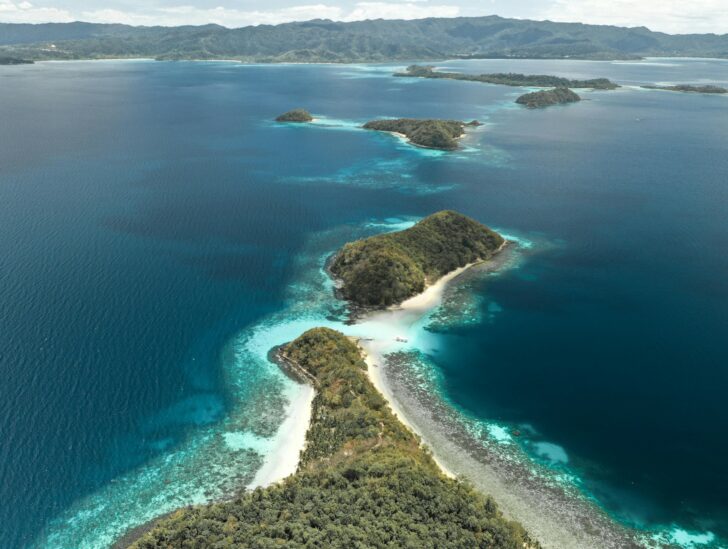
The economic landscape of Southeast Asia mirrors the complexity and dynamism of the region’s ocean currents. The region’s history of trade, the pivotal role of ASEAN in fostering regional growth, and the modern challenges and opportunities it faces form the bedrock of its economic narrative. From the bustling trade hubs of Singapore to the agricultural heartlands of Vietnam, the economies of Southeast Asia are linked by a shared pursuit of prosperity and collaboration.
The Association of Southeast Asian Nations (ASEAN), with its ten member states, is the keel that steadies this ship of regional economic and security cooperation. Despite critiques of its principles of non-interference and the varied economic statuses of its members, ASEAN remains a beacon of collective ambition, steering its members toward peaceful coexistence and mutual prosperity.
From Spices to Silicon: Trade Evolution
The evolution of Southeast Asia’s trade is as rich and vibrant as the spices that once dominated its economies. Spices and aromatics, the prized bounties of its tropical ecoregions, entered prehistoric trade networks and captivated the palates of India and Europe. By around 100 BCE, maritime Southeast Asia had become a crucial node in the Indian Ocean and South China Sea trade routes, fostering economic and cultural development that would see the adoption of Hindu features in statecraft and religion.
Indonesia’s historical expertise in metalworking laid the foundation for the region’s manufacturing industries, signaling a transition from an economy based on natural commodities to one anchored in industrial prowess. This evolution from spices to silicon, from ancient trade to modern industry, is a testament to Southeast Asia’s economic adaptability and enduring spirit of innovation.
The Role of ASEAN in Regional Growth
ASEAN plays a crucial role in Southeast Asia’s economic narrative, much like a maestro skillfully leading a diverse orchestra of economies. The ASEAN Free Trade Area (AFTA), established in 1992, is a symphony of trade liberalization measures designed to amplify intra-ASEAN trade and attract foreign direct investment. The 1990s marked a crescendo in ASEAN’s expansion, with the inclusion of:
Brunei
Vietnam
Laos
Myanmar
Cambodia
This set the tone for a period of robust growth and integration in the entire region.
The economic variance within ASEAN, reflected in the wide GDP per capita range among its members, speaks to the organization’s ability to unite economies of different scales and developmental stages. This economic concerto, with each nation playing its part, showcases the potential of regional collaboration to elevate the collective economic fortunes of Southeast Asia.
Challenges and Opportunities Ahead
Southeast Asia finds itself at a critical juncture, grappling with the twofold challenges of global health crises and the imminent threat of climate change. The COVID-19 pandemic, a storm that has ravaged economies worldwide, prompted ASEAN to coordinate an economic recovery plan in 2020, ensuring the free flow of trade and the resilience of regional supply chains. Climate change, with its dire predictions for fisheries and coral reefs, poses a threat to the region’s natural wealth and the livelihoods of its people.
Despite these challenges, the horizon is not devoid of opportunities. Southeast Asia’s recovery from the pandemic and its potential for sustainable development offer a beacon of hope for a region striving to balance economic growth with environmental stewardship. The journey ahead is fraught with obstacles, yet it is also paved with the possibility of a brighter, more resilient future.
Southeast Asia’s Natural Wonders
Southeast Asia’s natural splendor showcases the planet’s remarkable diversity, boasting landscapes such as:
the limestone karsts of Ha Long Bay
expansive rainforests rivaled only by the Amazon
the enigmatic charm of underground river systems in the Phong Nha Caves
the sprawling cave chambers of Sơn Đoòng, the largest known cave in the world
These natural marvels are not just tourist attractions; they are sanctuaries that hold the secrets of Earth’s ecological past and keys to its future.
The region’s geography, which includes mountain ranges, volcanic arcs, and fertile plains, is a canvas painted by the forces of nature over millennia. From the serene beauty of the highlands to the ruggedness of its volcanic terrain, Southeast Asia’s landscapes tell a story of creation, destruction, and rebirth, inviting adventurers and nature enthusiasts to explore and marvel at the wonders of the natural world.
Majestic Landscapes: Mountains and Volcanoes
The majestic landscapes of Southeast Asia, including eastern Thailand, are crowned by towering mountains and active volcanoes that serve as sentinels over the land. Thailand’s Doi Inthanun National Park, a part of the great Himalayan mountain range, boasts the country’s highest peak, offering breathtaking views and a cool respite from the tropical climate. In Vietnam, the Ba Vi National Park is renowned for its mountain range adorned with temples that provide panoramic vistas of the surrounding land and the distant skyline of Hanoi.
The Indonesian archipelago, one of the most volcanically active regions in the world, epitomizes the dynamic interplay between land and fire. These volcanic landscapes are not only awe-inspiring but also fertile grounds for agriculture, supporting the lives of millions who live in their shadows. The mountains and volcanoes of Southeast Asia are:
not merely geographical features
cultural icons
spiritual havens
integral to the region’s identity.
Biodiversity Hotspots: Flora and Fauna
Southeast Asia’s biodiversity hotspots are treasure troves of life, hosting an array of species that contribute to the ecological balance of the region. In Cambodia’s Virachey National Park, conservation initiatives provide sanctuary for endangered species such as Asian elephants and sun bears, offering hope for their survival in the wild. Protected areas, including national parks, are critical to preserving the unique and often endangered wildlife found throughout Southeast Asia.
These efforts are vital for the continued existence of iconic species like:
tigers
orangutans
elephants
the prehistoric-looking komodo dragons
The richness of Southeast Asia’s flora and fauna is not only an important aspect of the region’s natural heritage but also a critical component of global biodiversity. As stewards of these lands, it is imperative to continue supporting conservation initiatives that ensure these species can thrive for generations to come.
Climate Patterns: Wet and Dry Seasons
The climate of Southeast Asia, a complex interplay of rainfall, heat, and humidity, is dictated by the region’s geographical position within the tropics. This tropical climate facilitates distinct wet and dry seasons, which dictate the rhythms of agricultural practices and the daily lives of its inhabitants. However, the region’s climate system is not immune to the impacts of global climate change, with projections suggesting a significant increase in heat-related deaths by the end of the century.
Changes in rainfall patterns and water quality pose a challenge to the region’s irrigation systems, which are essential for subsistence farming and food security. Southeast Asia’s vulnerability to climate change underscores the need for robust mitigation strategies and adaptive measures to protect its people and ecosystems from the adverse effects of a warming planet. As the region looks to the future, the resilience of its climate patterns will be a crucial factor in its ability to sustain the diverse life it supports.
The Journey Through Time: Southeast Asia’s Historical Saga
The historical narrative of Southeast Asia is a rich chronicle, charting human evolution, cultural exchanges, and political transformations across tens of thousands of years. Traces of distinctive Homo sapiens groups, ancestral to Eastern non-African populations, have been found in the region, dating back to between 50,000BC and 70,000BC. The subsequent expansion of East Asian-related ancestry into Maritime Southeast Asia and Oceania between 25,000BC and 50,000BC marks the early chapters of this epic tale.
Through the ages, Southeast Asia’s cultural and political institutions have been sculpted by the diverse influences of Indian, Chinese, Muslim, and European cultures. The arrival and spread of Islam in the 8th century CE, for example, reshaped the region’s societal norms, with the conversion of the King of Kedah among other significant events. Muslim traders played a role in these cultural exchanges, bringing changes in:
dietary laws
dress
male circumcision
education
These changes echo the transformative power of religion and ideology across the region.
Ancient Kingdoms: Hindu and Buddhist Influence
The profound influences of Hinduism and Buddhism significantly shaped the ancient kingdoms of Southeast Asia. Around 500 BCE, the Dong Son culture in modern northern Vietnam was renowned for its sophisticated bronze work, indicative of the region’s early complexity and connection to the wider world. The strategic embrace of Hinduism and Buddhism by local leaders through trade relations, rather than military conquest, allowed these religions to permeate the fabric of Southeast Asian society, strengthening the power of these early states.
The integration of Hindu beliefs into the local cosmologies by around 500 BCE led to the birth of states that adopted Indian institutions and cultural norms. The influence of these world religions on statecraft, architecture, and the arts laid the foundations for a cultural renaissance that would echo through the centuries, imprinting an indelible mark on the region’s cultural landscape.
Colonial Encounters and Independence
Southeast Asia’s historical narrative is punctuated by the arrival of European colonial powers, including:
Portugal
Spain
the Netherlands
France
Britain
Each imprinting its unique legacy upon the region. Thailand’s unique history as the only Southeast Asian nation to avoid colonization in the 19th century stands in contrast to the experiences of its neighbors. The economic attitudes and policies shaped by colonial rule continue to influence Southeast Asian countries in the post-colonial era.
The tumultuous period of World War II saw the Japanese occupation of Southeast Asia, a prelude to the post-war independence movements that would give rise to new nation-states. The Philippines’ path to independence, granted by the United States in 1946, marked a pivotal moment in the region’s decolonization efforts and the assertion of self-determination.
Modern-Day Southeast Asia: Unity and Disunity
In the present context, Southeast Asia is a patchwork of political systems, spanning from flawed democracies to authoritarian states and hybrid regimes. Timor-Leste, as the only fully free democracy within the ASEAN community, highlights the diversity of governance models present in the region. Despite this political diversity, ASEAN continues to foster regional cooperation and political freedom, contributing to the post-World War II landscape of unity and self-determination.
The narrative of modern-day Southeast Asia is one of both unity and disunity, with ASEAN playing a central role in mediating the region’s varied political aspirations. From the northern highlands of Vietnam to the bustling cities of Singapore and Jakarta, Southeast Asia remains a region where the quest for harmony and progress is an ongoing journey, reflective of its complex historical saga.
Learn more, visit Southeast Asia | Map, Islands, Countries, Culture, & Facts.
Summary
As our journey through Southeast Asia comes to a close, we are left with a profound appreciation for the region’s intricate geopolitical landscape, its rich cultural mosaic, and the diverse economic currents that have shaped its history and will continue to define its future. From the contested waters of the South China Sea to the bustling trade routes that have evolved over the centuries, Southeast Asia’s story is one of resilience and transformation, a testament to the indomitable human spirit.
The natural wonders of Southeast Asia, with their majestic mountains, vibrant biodiversity, and unique climate patterns, remind us of the delicate balance between humanity and the environment. The region’s historical saga, from ancient kingdoms influenced by Hinduism and Buddhism to the modern-day tapestry of political systems, underscores the complexity and richness of Southeast Asian life. As we reflect on the lessons learned, let us carry forward a renewed sense of wonder and respect for this remarkable part of the world, its peoples, and its enduring legacies.
Frequently Asked Questions
What sub region is Southeast Asia?
Southeast Asia is divided into two subregions: Mainland Southeast Asia and Maritime Southeast Asia. Mainland Southeast Asia includes countries like Cambodia, Laos, and Vietnam.
How are the 11 countries of Southeast Asia divided?
Southeast Asia is divided into mainland and island zones. The mainland includes Myanmar, Thailand, Laos, Cambodia, and Vietnam, while the islands include Indonesia, the Philippines, Malaysia, Brunei, East Timor, and Singapore.
What role does ASEAN play in the region?
ASEAN plays a crucial role in promoting economic and security cooperation among its member states, aiming to foster regional growth and stability through various initiatives. It also has a significant role in mediating geopolitical tensions in the region.
How does the cultural diversity of Southeast Asia manifest itself?
The cultural diversity of Southeast Asia is manifested through its variety of ethnic groups, world religions, and native languages, influenced by cultural exchanges with Islam, India, and China. This has shaped the region’s modern identity.
What are some of the economic challenges and opportunities that Southeast Asia faces?
Southeast Asia faces economic challenges due to the COVID-19 pandemic and climate change, but it also presents opportunities for recovery, sustainable development, and global trade.
